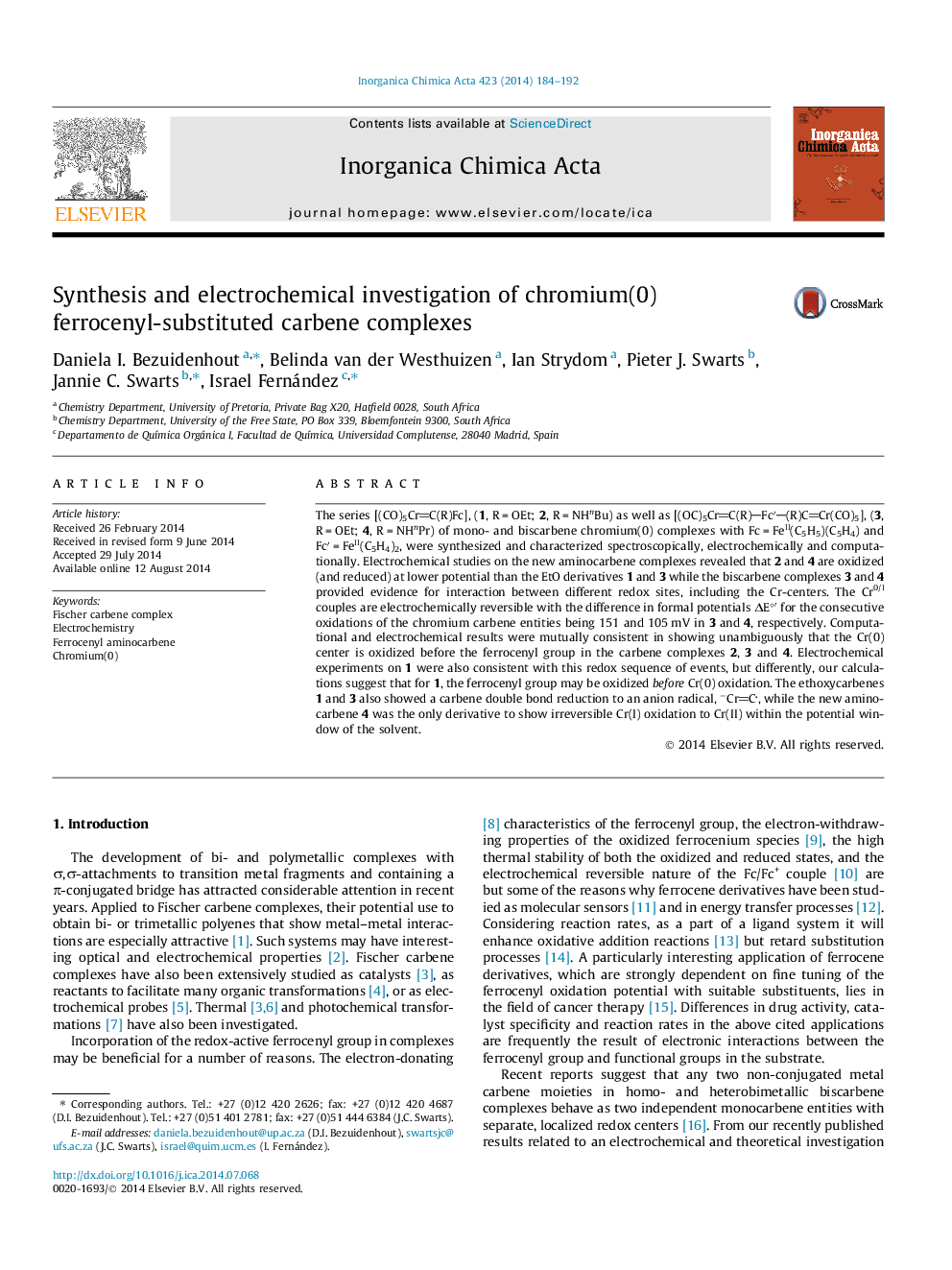| Article ID | Journal | Published Year | Pages | File Type |
|---|---|---|---|---|
| 1309456 | Inorganica Chimica Acta | 2014 | 9 Pages |
•Electrochemical and computational evidence of stepwise oxidation.•Di- and trimetallic ferrocenyl aminocarbene complexes.•Interaction between metal centers.
The series [(CO)5CrC(R)Fc], (1, R = OEt; 2, R = NHnBu) as well as [(OC)5CrC(R)Fc′(R)CCr(CO)5], (3, R = OEt; 4, R = NHnPr) of mono- and biscarbene chromium(0) complexes with Fc = FeII(C5H5)(C5H4) and Fc′ = FeII(C5H4)2, were synthesized and characterized spectroscopically, electrochemically and computationally. Electrochemical studies on the new aminocarbene complexes revealed that 2 and 4 are oxidized (and reduced) at lower potential than the EtO derivatives 1 and 3 while the biscarbene complexes 3 and 4 provided evidence for interaction between different redox sites, including the Cr-centers. The Cr0/I couples are electrochemically reversible with the difference in formal potentials ΔE°′ for the consecutive oxidations of the chromium carbene entities being 151 and 105 mV in 3 and 4, respectively. Computational and electrochemical results were mutually consistent in showing unambiguously that the Cr(0) center is oxidized before the ferrocenyl group in the carbene complexes 2, 3 and 4. Electrochemical experiments on 1 were also consistent with this redox sequence of events, but differently, our calculations suggest that for 1, the ferrocenyl group may be oxidized before Cr(0) oxidation. The ethoxycarbenes 1 and 3 also showed a carbene double bond reduction to an anion radical, −CrC, while the new aminocarbene 4 was the only derivative to show irreversible Cr(I) oxidation to Cr(II) within the potential window of the solvent.
Graphical abstractElectrochemical and computational evidence is presented for the stepwise oxidation of di- and trimetallic ferrocenyl chromium biscarbene complexes.Figure optionsDownload full-size imageDownload as PowerPoint slide
